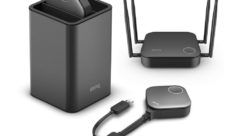Signing up and privacy
Mar 26, 2010 10:31 AM,
By Franklin McMahon
Signing up for Facebook and Twitter is a quick and simple process with just a few key differences between the two, mostly involving privacy. Privacy settings are in place on both networks to give the user control over how much info is displayed to the public. Twitter has always had privacy deselected as the default option, meaning when you create a Twitter account, it becomes public. That means anyone can see what you are “Tweeting” (what you post as a status update) simply by going to your Twitter page. You do have the option to protect your updates (“Tweets”), meaning when people visit your Twitter page, it is locked. No one can see what you post except those you specifically approve as your followers. People can submit their Twitter info to you to request that they are allowed to be your follower. Once you approve them, they can see your Tweets—every update you post.
Conversely, the default on Facebook, until recently, has always been protected. The site started as a place for students in school to connect with other students. Privacy was a great method to only connect with those you specifically approved. While Facebook grew, and more recently really exploded in popularity, its protected default seemed out of place when every other network, such as MySpace, Twitter, LinkedIn, and others, had privacy off as the default. This past year, Facebook asked users to reset their privacy options, with the new default being off. This opened up pages so you were more free to explore. You are more likely now to be able to see someone’s page, whereas before, you had to be approved as a friend before you could view their page. The most important fact was that the privacy options did not really change. You can still lock your Facebook page down so only your friends can see your posts. The privacy change was more of Facebook’s attempt to nudge users to be more open.
One thing to consider is that having privacy enabled, locking down your Twitter account to just friends or setting your Facebook account to be accessed by only those you approve, is the fastest way to fail at social media. Social networking is a large, organic, constantly evolving party. You having access to everyone, and everyone having access to you, is an important key toward growing your network. Having privacy enabled is very limiting. Imagine there is a large networking cocktail party in the real world. People are snacking on appetizers, sipping drinks, running into others by chance, and having a good time. Then imagine you are locked in room off to the side with a note on the door that reads, “If you would like to connect with me, slip a request under the door, and if I decide to approve you, I will unlock the door and let you, only you, in.” Why would someone go through that kind of trouble? Keep your networks open for maximum benefit.
Having said that, you can also have it both ways. While your public profile may be completely open to all, you can also create groups that restrict access a little or a lot. For example, you may want to start a Group or a fanpage for your dealers, interns, or potential dealers and interns. Remember, social networks are not all about you—people may also be there to interact with each other around the hub that you create and nurture.








